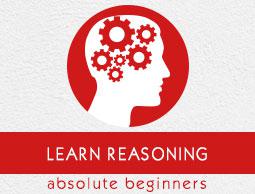In reasoning sections of various competitive exams, some questions are asked on Data sufficiency. Data sufficiency questions are not new topics. All you have to do is to analyse the given data and see if you can get the answer to the question using the given data. Typical cases in Data Sufficiency −
There are four different cases in data sufficiency;
- Relationship
- Dates
- Comparison
- Age
Relationships
This is a typical type of question. The wording is like – How is P related to X?. So in this type of cases the confusion is that the students need to judge the relationship without knowing the gender of the persons.
So, to know how P is related to X, you have to analyse gender of P. This information can be given directly as P is a male/female or indirectly as the following −
- P is a brother/sister of (say) X.
- P is the father/mother of (say) X.
For Example −
X is the brother of Y and X is the brother of Z. How are Y and Z related?
Solution −
Since X is brother of both Y and Z, it means Y and Z are also brothers or sisters. So we must know their sex to know who is the brother and who is the sister or both are brothers or both are sisters.
Dates
Questions asked on Dates are like this- On which day of the week did X reach Agra? or what is date of birth of X? In such type of questions, you have to determine a day or a date. In such cases, the data will provide you some knowledge of previous day or date. So a day or a date can be determined if and only if
- The day or date of some earlier incident is mentioned.
- The number of days between that incident and required day is given.
If one of the above information is missing then data will be insufficient.
For Example −
What is the date of birth of Remo? (Assume the memories of Rani and Swapnil are correct.)
a) Rani remembers that Remo’s date of birth is between 17th June and 21st June.
b) Swapnil says that Remo’s date of birth is after 19th June but before 23rd June.
Solution −
From statement a, we conclude that the possible answers are 18th June, 19th June and 20th June. From statement b we conclude that 18th and 19th June are ruled out. So, 20th June must be the answer.
Comparison
In this method, the wording of question is, who is the tallest among X, Y and Z? or who is sitting to the left of A when A, B and C are sitting together?. In these questions, you have to write the name of various persons in ascending or descending order. You have to make comparisons between respective places, heights etc. in a fixed pattern or order.
To solve this type of question, it is best way to write the data given in the two statements in the form of inequalities and then see if the two can be combined into one single inequality to get the answer. Here inequality means not equal to. Statements like A > B may imply A is burdensome than B or A is taller than B or A is sitting to left of B etc.
For Example −
Among four friends A, B, C and D, who is the burdensome?
a) B is burdensome than A, but lighter than D.
b) C is lighter than B.
Solution −
Write statement ‘a’ as −
D>B>A Descending order for burdensome
Write statement ‘b’ as −
B>C
Now these 2 can be combined as - D>B>C>A. So D is burdensome.
Figures
A figure accompanying a data sufficiency question will confirm to the information given in the question but will not necessarily confirm to the additional information given in the statement.
Lines those have shown as straight can be assumed to be straight and lines that appear jagged can also be assumed straight.
Position of points, angles, regions etc. might be assumed.
NOTE − When we talk of information in a statement, we mean definite information. It should not be indefinite information. What do we mean by definite and indefinite information? A definite information is that which gives exact relation.
For example, “Suresh’s age will be equal to 16 years after four years.” is definite information while “Suresh will be less than 20 years old after 4 years”is not.


